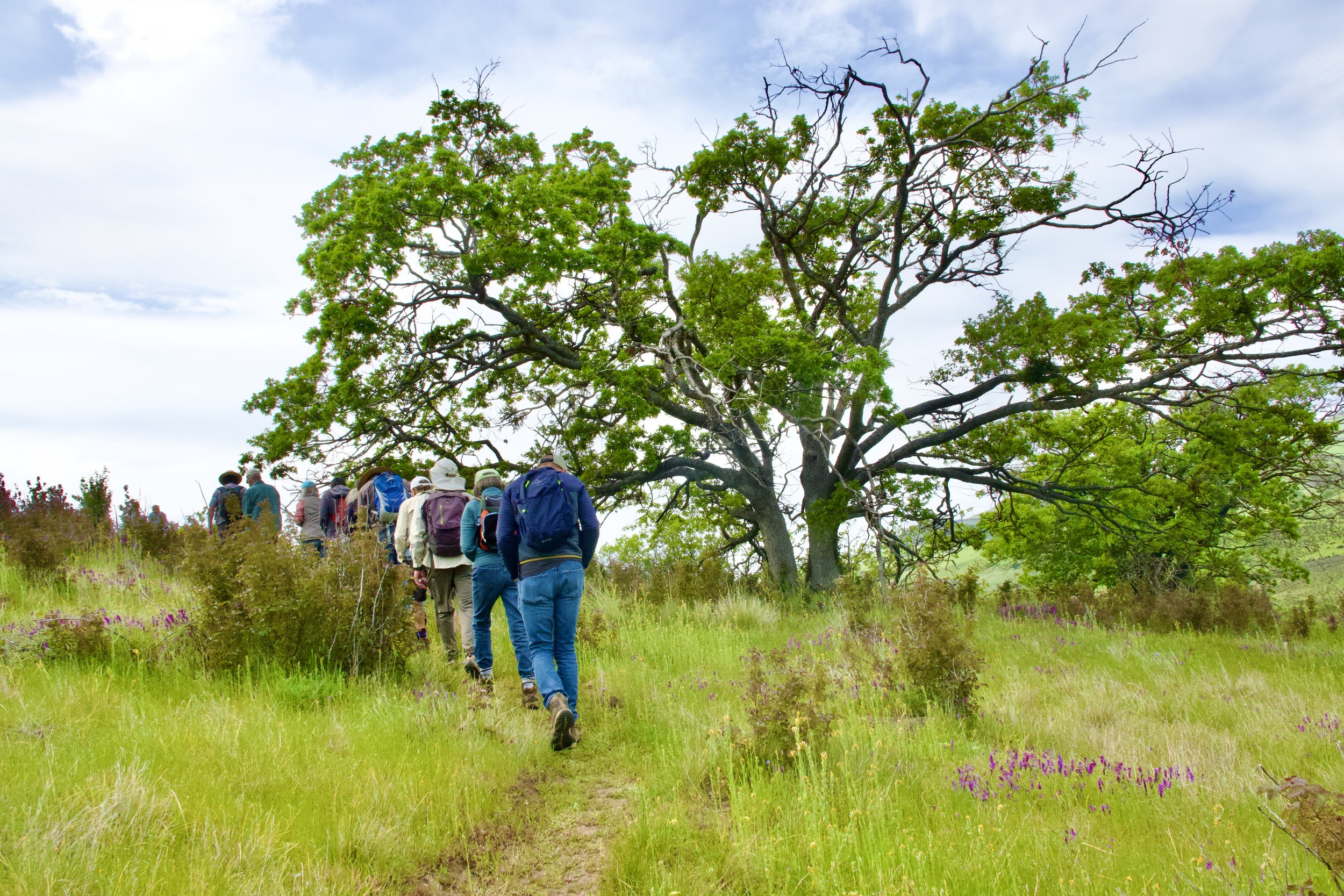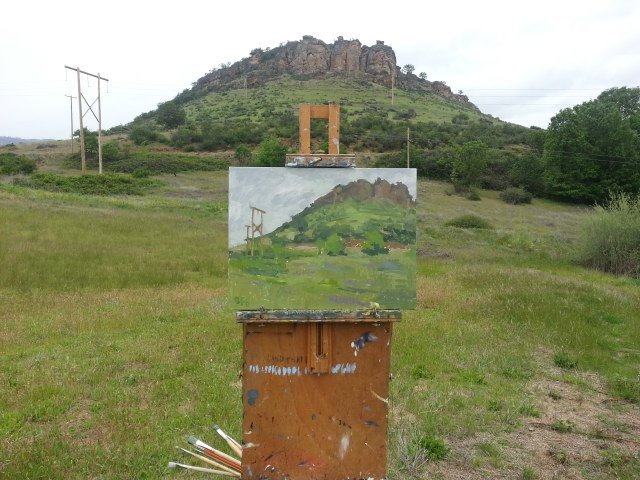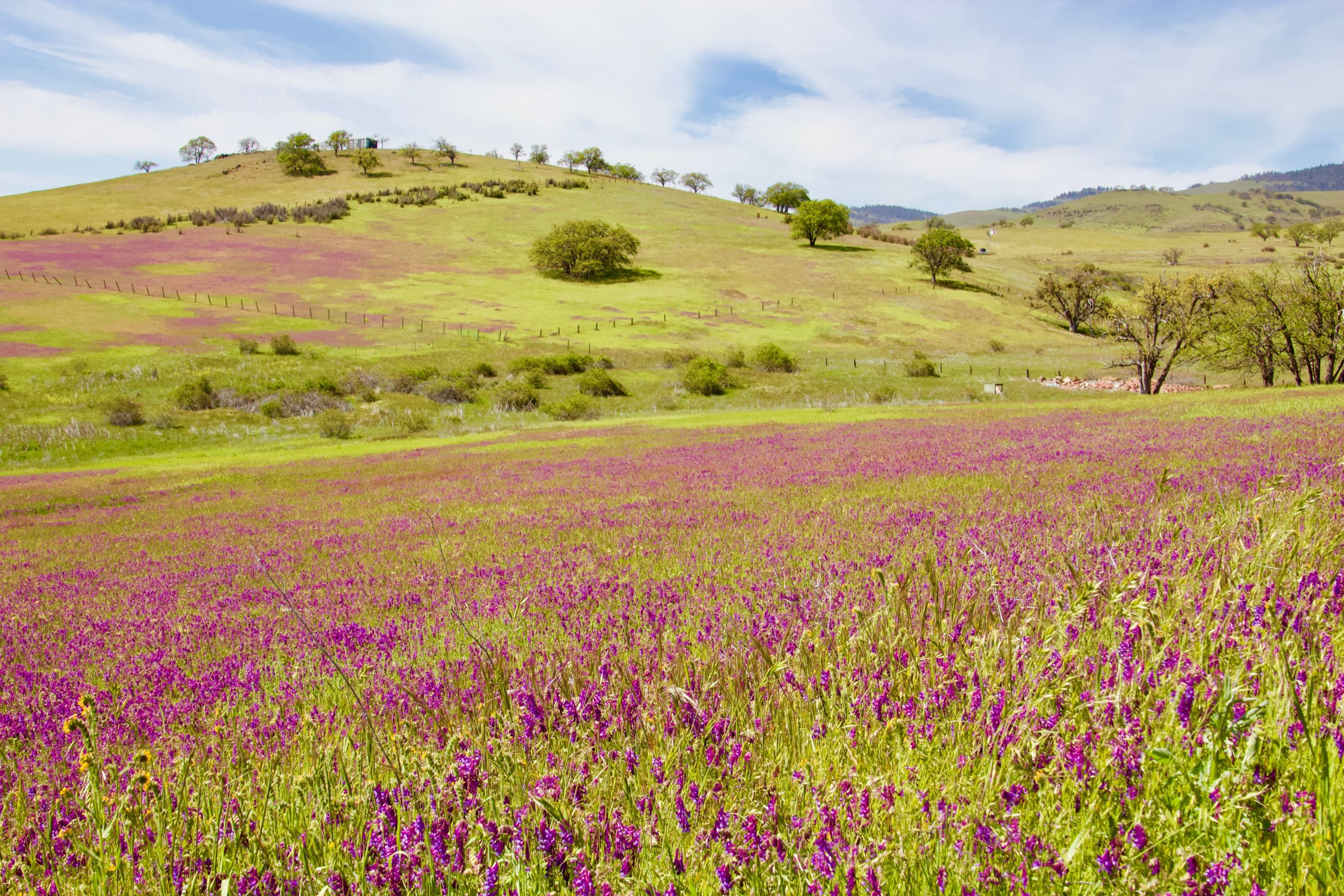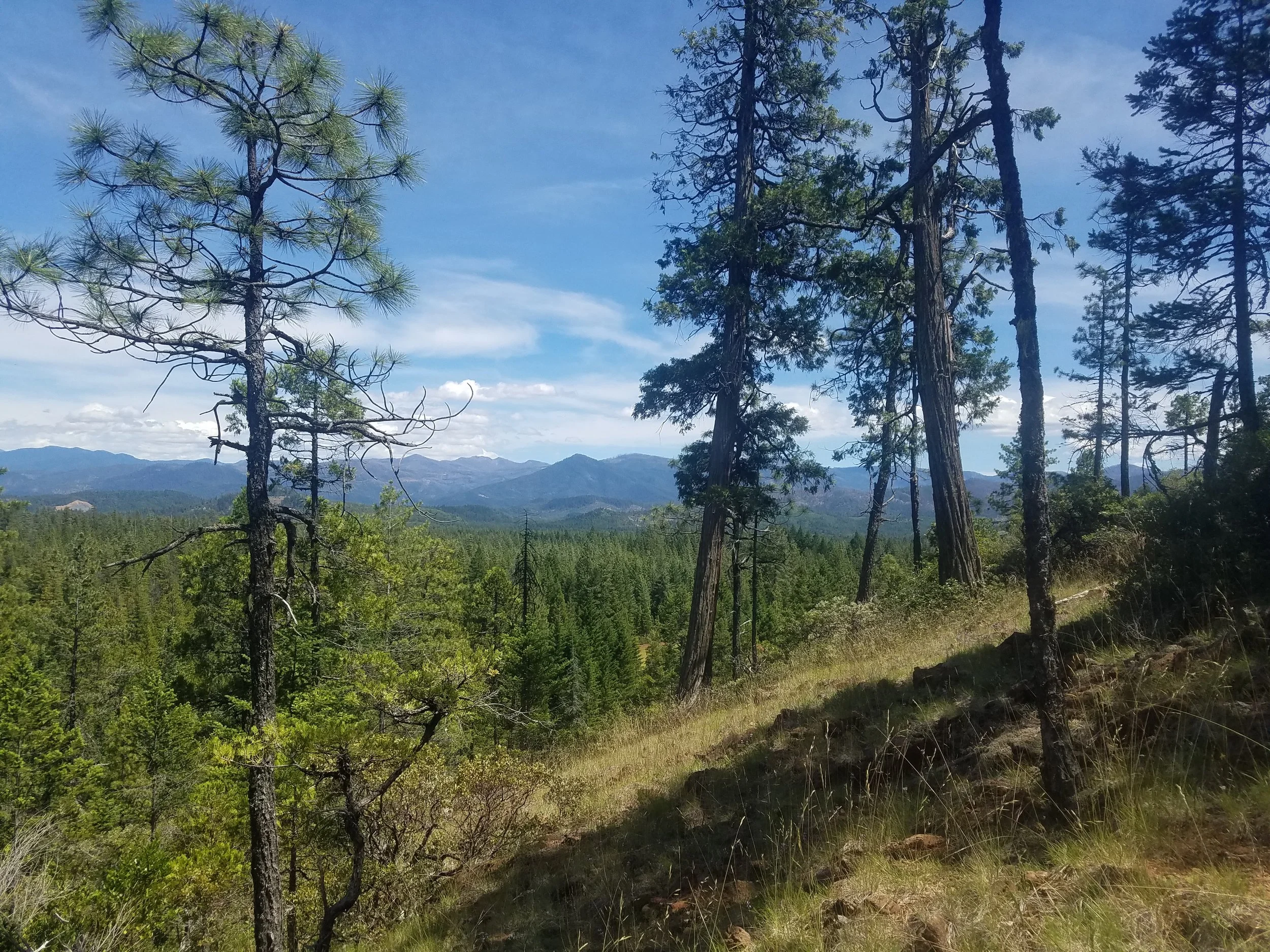What are wildlife-loving landowners and land managers to do?
Article by Lyndia Hammer, Forest Ecologist, SOLC Land Steward
All photos are of White Oak Farm in Williams
Signs of spring come early in southwestern Oregon, and with spring, come hints of summer. As we tilt toward the sun and the ground warms, we are reminded that another fire season will soon be upon us. We cut back shrubs and trees from our roadsides, driveways, and around our homes. In early summer, we cut grasses near our homes. If we live near forest, we might wonder about the forest’s flammability, its health, or its utility as habitat for native reptiles and amphibians, birds, mammals, native wasps, bees, butterflies, and other pollinators. A question comes up. Can we protect wildlife habitat while also reducing the forest’s flammability?
We know that snags, hollow branches and trees, and dead wood (standing and on the ground) are important for wildlife, but how much is too much? How do we balance our desire to steward native forest and protect wildlife habitat while also acting responsibly to reduce fire risk to our homes and neighbors?
Photo above: Cut small diameter conifer tree trunks, also known as “boles,” have been left long and on the ground to provide wildlife habitat, retain carbon, and build soils. Fine materials such as tree tops and branches were piled and burned to reduce fine fuel loading. Note the patch of young incense-cedar trees retained for wildlife habitat and structural diversity.
Photo above: Large downed wood and broken-topped madrone retained as wildlife habitat in thinning area to preserve complex forest habitat.
If we consult wildlife biologists, we learn that more than 85 species of animals and fungi depend on fallen and standing snags in varying stages of decay and size for nesting, roosting, and foraging habitat. Twentieth century forestry practices intentionally targeted dead trees for removal, resulting in the loss of critical habitat for woodpecker populations whose primary food source is bark beetles and forest insects. The deliberate removal of snags to free up growing space for young trees, improve worker safety in harvest areas, and to reduce fuels, has destabilized the relationship between insects and their natural predators in North American forests. Unmanaged, older forests in our region may have historically supported 2-16+ snags per acre and 5-90 pieces of downed wood per acre, ranging from small to large in size and varying with elevation, forest type, and other factors (see this US Forest Service publication for more info).
Private forestland owners and managers can help by retaining snags and large downed wood for wildlife habitat where they are not a falling hazard around homes or other structures. Snags can even be retained in urban settings and backyards, reducing the tree height for safety as needed. You can read this insightful Habitat Network article for more information about snags and wildlife.
Photo above: Complex patchy habitat retained in a small diameter thinning area. Note piles of tree tops and branches to be burned, while low to mid-story canyon live oak has been retained along with leaning live and dead trees which form complex habitat structure for wildlife.
Photo above: Fine fuel materials in foreground to be burned; tree trunks on ground left long to promote soils and provide wildlife habitat and/or for future firewood harvest. Note smaller diameter madrone retained in background.
Fire Risk and Dead Wood
Good news for wildlife—we can protect important wildlife habitat while also reducing fire risk in our forests. A look into fire behavior and fuel modeling shows us that large, downed wood and snags are not “flashy” fuels which carry fire. They are long slow burning fuels which result in slow moving fire with the shortest flame lengths. Snags can torch and emit sparks, potentially igniting fires ahead of the flaming front, but torching also occurs among standing live trees depending on fire weather conditions.
So what are landowners and forestland owners to do? The number one action to take is to follow Firewise recommendations around the house. This includes updating home vents to prevent entry of sparks, keeping gutters clean, maintaining a “no burn” zone within 15 feet of the home, and reducing fuels within 150 feet of the home. See Firewise guidelines in your area for more information, or check out the Jackson County Firewise website.
As we move away from the home, deeper into the woodlands, how can we achieve fuels and forest health goals while also protecting wildlife habitat?
Case Study: Ecological Thinning, White Oak Farm, Williams
In southwestern Oregon, the vast majority of privately-owned forests are recovering from high-grade logging that dates back to the 1950s and 1960s, with a second logging period generally in the 1980s or 1990s, followed by a period of little management. As a result, the current condition of thousands of acres of mixed-conifer hardwood forest includes an abundance of young Douglas-fir trees in the 4 – 9 inch at DBH (diameter at breast height) size class which grew in following past logging events. A proactive approach to fuels reduction and forest restoration in these stands involves targeted thinning of live, small-diameter (usually up to 9” DBH) Douglas-fir. A reactive approach to fuels reduction and forest restoration is to thin dead and dying trees as the stand begins to self-thin. The proactive forestry approach described here yields multiple benefits: thinning the smaller diameter Douglas-fir reduces the vertical and the horizontal continuity of fuel in the understory layer of the forest, reducing ladder fuels (vegetation that can carry fire to the canopy) and overall fuel loading. It also releases the remaining larger, older pine, oak, Douglas-fir, cedar, madrone, and other native tree and shrub species from competition for water and/or light, often resulting in better growth for the leave trees, and increased shrub habitat for birds and other wildlife. This work may result in the cutting of around 100 – 200 or more small-diameter Douglas-fir trees per acre. After this treatment, the larger, older dead and dying trees and snags, large downed wood, and large patches of native shrubs important for wildlife such as ceanothus and manzanita, can be retained with confidence because the selective removal of much of the young Douglas-fir layer has substantially reduced the overall fuel quantity and continuity in the forest.
Photo above: Thinning area after fine materials (tree tops and branches) have been burned. Note retention of some pine and cedar saplings, shrubs, large downed wood, and some smaller downed wood retained on site for firewood, or may be left to slowly decompose.
Photo above: Tree boles (trunks) left long and on the ground to preserve carbon on site, build soils, and create habitat for fungi, insects, reptiles, amphibians, small mammals, and birds.
The farmers and educators at White Oak Farm in Williams are doing just that. With the help of private forester Josh Weber of Green Path Landworks, and financial assistance from the Natural Resources Conservation Service (NRCS), Taylor Starr and his family are reducing fire risk to their forest, while preserving wildlife habitat. Southern Oregon Land Conservancy is proud to hold a conservation easement on this beautiful farm and natural area. Part of our role is to review and approve forest management plans and it has been a pleasure to approve this thoughtfully executed project. The series of photos in this article documents forest thinning work in progress at White Oak Farm in Williams.
Preservation of wildlife habitat is up to all of us!










